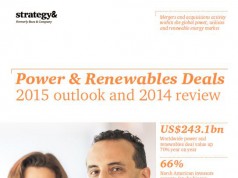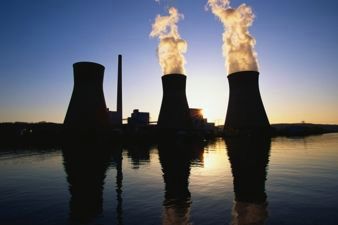
Beijing / Nairobi – Despite China’s rapid advancement towards a green economy, the country is facing significant environmental and social challenges that must be addressed if it is to achieve its sustainable development goals, according to a joint report released last week by China’s Ministry of Environmental Protection (MEP) and the United Nations Environment Programme (UNEP).
The report, “China’s Green Long March: A Study of Renewable Energy, Environmental Industry and Cement Sectors”, confirms the country is a global leader in renewable energy technology investment. In 2012, alone, China’s renewable energy investment totalled US $ 67.7 billion – the highest in the world – and double the amount it invested in 2009.
China has made significant investments in industrial energy efficiency, which resulted in a 19 percent reduction in energy intensity per unit of Gross Domestic Product (GDP) between 2006 and 2010.
Investment in the cement sector, a major contributor to CO2 emissions, resulted in a 41 percent reduction of energy required to produce a tonne of cement over this period of time.
China’s 12th Five Year Plan, from 2011 to 2015, introduced a national target for carbon emissions, which calls for reducing carbon intensity per unit of GDP by 40 to 45 percent by 2020, compared to 2005 levels. In addition, China also plans to produce 15 percent of its energy from non-fossil fuel sources by 2020.
According to the joint report prepared by the Chinese MEP’s Policy Research Centre for Environment and Economy, China has a strong policy framework in place to support a national transition to a green economy. For example, incentives, such as feed-in-tariffs, subsidies and tax advantages, already exist and are helping stimulate green investment, as are strict regulations to help phase out inefficient plants, halt water pollution and improve waste management.
However, significant challenges remain:
- China is the world’s largest emitter of greenhouse gases – accounting for 27 percent of the total emissions in 2012. While its GDP accounts for 10 percent of the global output, it consumes 60 percent of the world’s cement, 49 percent of the iron and steel, and 20 percent of the energy.
- Local pollution, particularly to air and water, is putting a strain on China’s economic growth. It is estimated that 90 percent of the country’s urban water bodies are polluted, and outdoor pollution is estimated to contribute to 1.2 million premature deaths per year.
As China continues its urbanization, the report finds that the country should not only develop more energy efficient buildings, but also create greener supply chains that reduce waste generation, water and material consumption, and energy use. Currently, buildings account for as much as one-third of the global greenhouse gas emissions, thus greening the building sector supply chain could be a key opportunity for the country.
In the solar photovoltaic (PV) sector, the report finds that there has been an over-investment in the manufacturing capacity, which has resulted in a dramatic fall in prices and significant financial losses.
At the same time, there has historically been under-investment in the country’s grid capacity, which could cause problems in the coming years if action is not taken. Many of the country’s solar PV projects are located in the western part of the country. Thus, it will be increasingly important for the country to be able to transmit this energy to the more developed eastern region.
Furthermore, the UNEP reports finds that there is a major technology gap between Chinese firms and its international competitors. The Chinese government needs to encourage more innovation and investment in research and development (R&D), both to tackle the country’s significant environmental challenges and to ensure that its green industries can complete globally.
Click here to read/down the Full Report.
Source: UNEP.


















